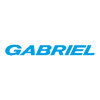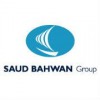Oet Trainer
20+ Oet Trainer Interview Questions and Answers

Asked in SKH Metals

Q. What are the steps involved in the manufacturing process?
The manufacturing process involves several steps from raw material acquisition to final product assembly.
1. Raw material acquisition - sourcing materials needed for production
2. Design and planning - creating a blueprint for the product
3. Production - manufacturing the product using machinery and labor
4. Quality control - ensuring the product meets standards
5. Packaging and shipping - preparing the product for distribution
6. Assembly - putting together the final product
7. Tes...read more

Asked in Krishna Maruti

Q. What is the difference between laminar and turbulent flow?
Laminar flow is smooth and orderly, while turbulent flow is chaotic and irregular, affecting fluid dynamics significantly.
Laminar flow occurs when fluid moves in parallel layers, with minimal disruption between them.
Turbulent flow is characterized by eddies and swirls, leading to increased mixing and energy dissipation.
An example of laminar flow is blood flow in small vessels, where it moves smoothly.
An example of turbulent flow is blood flow in larger arteries during vigorou...read more
Oet Trainer Interview Questions and Answers for Freshers

Asked in HFCL Limited

Q. Types of fluid and what is coefficient of performance
Types of fluids include air, water, refrigerants. Coefficient of performance is a measure of efficiency in heat pumps and refrigeration systems.
Types of fluids: air, water, refrigerants
Coefficient of performance measures efficiency in heat pumps and refrigeration systems
Examples: COP of a heat pump is the ratio of heat output to energy input

Asked in SKH Metals

Q. Is English or Hindi required for effective communication in this role?
Effective communication can be achieved in both English and Hindi, depending on the audience and context.
English is often used in international settings, such as medical conferences.
Hindi may be more effective for communicating with local patients in India.
Understanding the patient's language can improve trust and compliance.
Bilingual professionals can bridge gaps in communication, enhancing care.

Asked in Krishna Maruti

Q. What is quality and production?
Quality refers to the standard of a product or service, while production is the process of creating goods or services.
Quality ensures that products meet specific standards, e.g., pharmaceuticals must meet safety regulations.
Production involves the methods and processes used to create goods, e.g., assembly lines in manufacturing.
Quality control measures, such as inspections, are crucial in both fields to maintain standards.
In healthcare, quality can refer to patient care stand...read more

Asked in Krishna Group

Q. What is welding, and what are the different types of welding?
Welding is a fabrication process that joins materials, usually metals, by melting them together.
Welding involves using heat to melt and fuse materials together
Common types of welding include MIG, TIG, and stick welding
Welding is used in various industries such as construction, automotive, and aerospace
Examples of welded products include bridges, pipelines, and metal sculptures

Asked in Krishna Maruti

Q. What is mechanical refrigeration?
Mechanical refrigeration is a process that removes heat from a designated area to lower its temperature using mechanical means.
Uses a refrigerant to absorb and release heat.
Commonly found in air conditioning systems and refrigerators.
Operates on the principles of thermodynamics, particularly the refrigeration cycle.
Examples include vapor-compression and absorption refrigeration systems.

Asked in SKH Metals

Q. What is the difference between alloy steel and mild steel?
Alloy steel is a type of steel that contains other elements besides iron and carbon, while mild steel is a type of carbon steel with low carbon content.
Alloy steel has higher strength, hardness, and wear resistance compared to mild steel.
Alloy steel is more expensive than mild steel due to the additional alloying elements.
Examples of alloy steel include stainless steel, tool steel, and high-strength low-alloy steel.
Mild steel is easier to weld and form compared to alloy steel...read more
Share interview questions and help millions of jobseekers 🌟


Asked in Krishna Maruti

Q. What is the thermodynamics
Thermodynamics is the study of energy and its transformations in systems.
It deals with the relationships between heat, work, and energy.
It includes the study of laws and principles governing energy transfer and conversion.
Examples include the analysis of engines, refrigerators, and chemical reactions.
Thermodynamics is essential in understanding the behavior of gases, liquids, and solids.
It has applications in various fields like engineering, physics, chemistry, and biology.

Asked in Krishna Group

Q. What is the compression molding process?
Compressing moulding process is a manufacturing technique where a material is compressed into a specific shape using heat and pressure.
Involves placing material in a mould cavity
Applying heat and pressure to compress the material into the desired shape
Commonly used in industries like automotive, aerospace, and electronics
Examples include compression molding of plastics or rubber

Asked in Gabriel India Limited

Q. What do you know about lathe machine chucks?
Chuck in a lathe machine is a device used to hold and rotate the workpiece during machining.
Chuck is typically made of metal and has jaws that can be adjusted to securely grip the workpiece.
There are different types of chucks such as three-jaw chuck, four-jaw chuck, and collet chuck.
Chuck allows for precise positioning and rotation of the workpiece for accurate machining.
Chuck can be manually operated or powered by the lathe machine.

Asked in Krishna Maruti

Q. What is the mechanism, and can you explain it?
Mechanism refers to the process or system by which something operates or functions.
It explains how something works or how it is done
It can be a physical or chemical process
Examples include the mechanism of action of a drug, the mechanism of a machine, or the mechanism of a biological process
It can also refer to the underlying principles or theories behind a phenomenon

Asked in SKH Metals

Q. What is material structure?
Material structure refers to the arrangement of atoms, molecules, or ions in a material.
Material structure determines the properties and behavior of a material.
It can be studied using techniques like X-ray diffraction, electron microscopy, and spectroscopy.
Examples of material structures include crystalline, amorphous, and composite structures.

Asked in BKT Tyres

Q. What is heat transfer?
Heat transfer is the movement of heat from one object to another due to a temperature difference.
Heat transfer can occur through conduction, convection, or radiation.
Conduction is the transfer of heat through direct contact, like a metal spoon getting hot in a hot drink.
Convection is the transfer of heat through the movement of fluids, like boiling water in a pot.
Radiation is the transfer of heat through electromagnetic waves, like the warmth felt from the sun.
Heat transfer i...read more

Asked in Krishna Group

Q. What is the boiling point?
Boiling point is the temperature at which a liquid turns into vapor.
Boiling point is specific to each substance and can vary based on pressure.
Water boils at 100 degrees Celsius at sea level.
Boiling point can be affected by altitude and atmospheric pressure.
Boiling point is an important property used in chemistry and cooking.

Asked in Autocomp Corporation Panse

Q. What is 5S?
5s is a workplace organization method that focuses on creating a clean and organized work environment to improve efficiency and safety.
Sort - Separate needed tools, materials, and instructions from unneeded items.
Set in order - Arrange items in a logical order for easy access and use.
Shine - Clean and inspect work areas regularly to maintain cleanliness and identify issues.
Standardize - Establish standards and procedures for maintaining the first three S's.
Sustain - Ensure th...read more

Asked in SRF

Q. What is distillation?
Distillation is a process of separating components of a liquid mixture based on differences in boiling points.
Distillation involves heating a liquid mixture to create vapor, then cooling the vapor to collect the separated components.
The component with the lower boiling point will vaporize first and be collected, leaving behind the component with the higher boiling point.
Common examples of distillation include the production of alcoholic beverages, essential oils, and purified...read more

Asked in Saud Bahwan Group

Q. What is welding?
Welding is a process of joining two or more pieces of metal together by melting and fusing them.
Welding involves using heat to melt the base metals and adding a filler material to create a strong joint.
Common types of welding include arc welding, MIG welding, TIG welding, and spot welding.
Welding is used in various industries such as construction, automotive, aerospace, and manufacturing.
Examples of welded products include bridges, buildings, pipelines, and metal furniture.

Asked in Mayur Uniquoters

Q. What is viscosity?
Viscosity is a measure of a fluid's resistance to flow.
Viscosity is often referred to as thickness or stickiness of a fluid.
It is caused by friction between molecules in a fluid as they move past each other.
High viscosity fluids flow slowly, while low viscosity fluids flow quickly.
Examples of high viscosity fluids include honey and molasses, while water has low viscosity.

Asked in Working as a Freelance Trainer

Q. Explain tenses and their uses.
Tenses in grammar indicate the time of an action or state of being.
Tenses are used to show when an action takes place - past, present, or future.
There are three main tenses: past, present, and future.
Each tense can be further divided into simple, continuous, perfect, and perfect continuous forms.
Examples: Past tense - I walked to the store. Present tense - She is reading a book. Future tense - They will arrive tomorrow.

Asked in Working as a Freelance Trainer

Q. Explain the present perfect tense.
The present perfect tense is used to describe actions that happened at an unspecified time in the past or have relevance to the present.
Formed with 'have' or 'has' + past participle of the verb
Used to talk about experiences, changes, or actions that started in the past and continue into the present
Often used with time expressions like 'already', 'yet', 'just', 'recently', etc.
Examples: 'I have finished my homework.' 'She has lived in Paris for five years.'

Asked in D&H Sécheron Electrodes

Q. Types of welding
Types of welding include MIG, TIG, stick, and flux-cored welding.
MIG welding uses a wire electrode and shielding gas to create a strong bond.
TIG welding uses a tungsten electrode and inert gas for precise and clean welds.
Stick welding uses a consumable electrode coated in flux to create a strong bond.
Flux-cored welding uses a tubular wire filled with flux for outdoor and windy conditions.

Asked in Vedanta Aluminium

Q. Define Hooke's Law.
Hook's law states that the force needed to extend or compress a spring by a distance is directly proportional to that distance.
Force needed to extend or compress a spring is directly proportional to the distance
Mathematically expressed as F = kx, where F is the force, k is the spring constant, and x is the distance
The law applies to elastic materials like springs and rubber bands
Interview Questions of Similar Designations
Interview Experiences of Popular Companies






Calculate your in-hand salary
Confused about how your in-hand salary is calculated? Enter your annual salary (CTC) and get your in-hand salary


Reviews
Interviews
Salaries
Users











